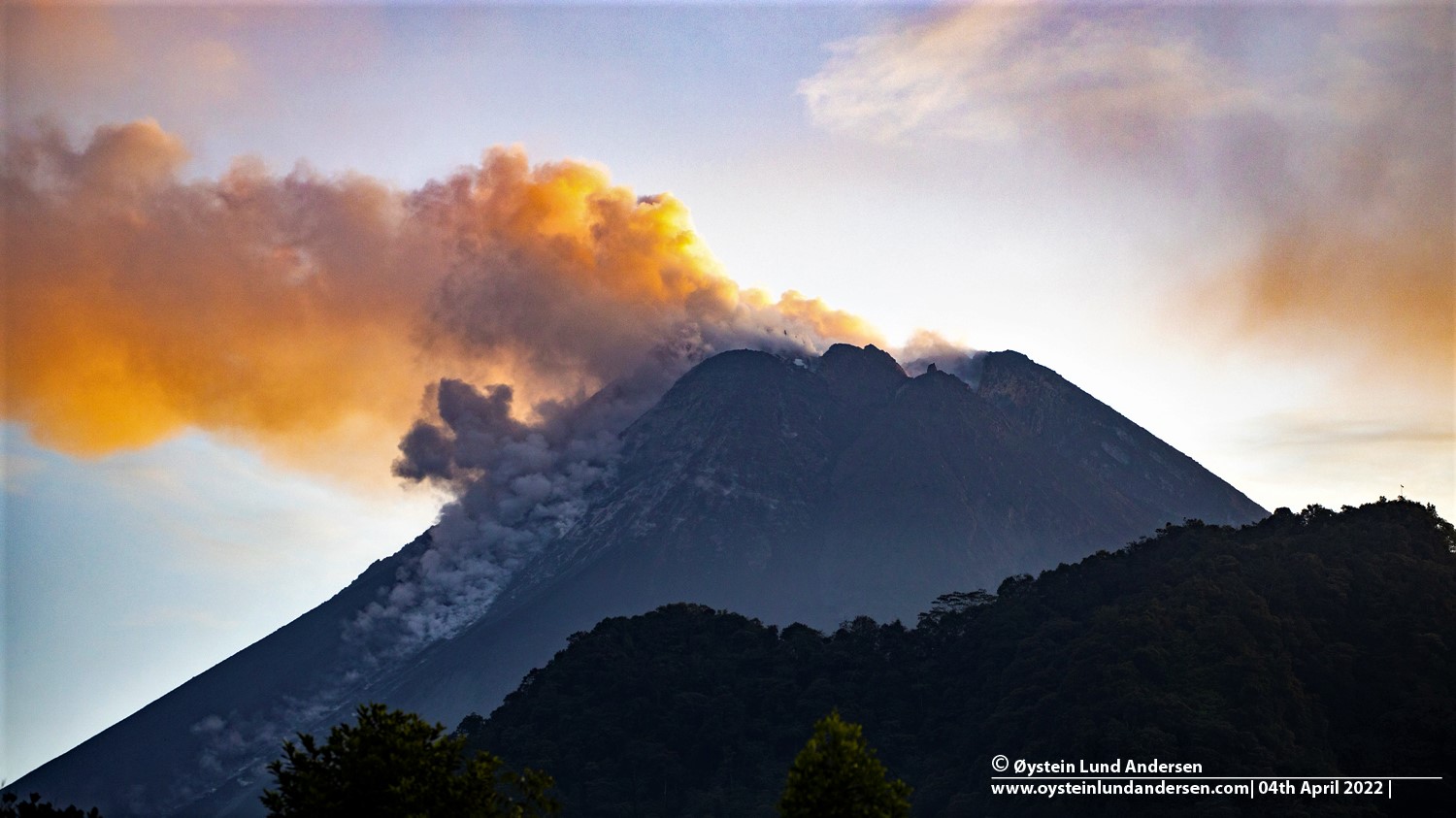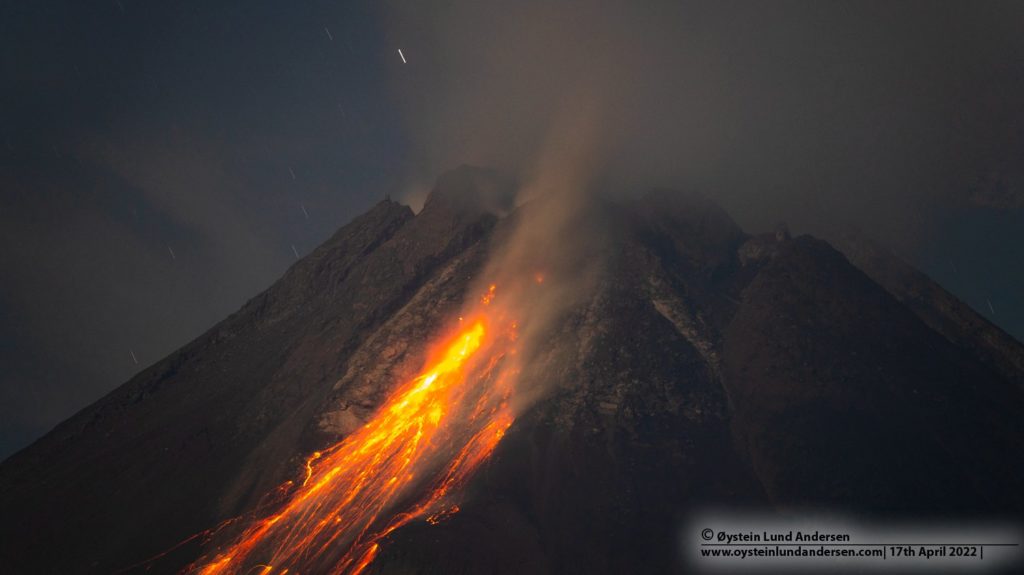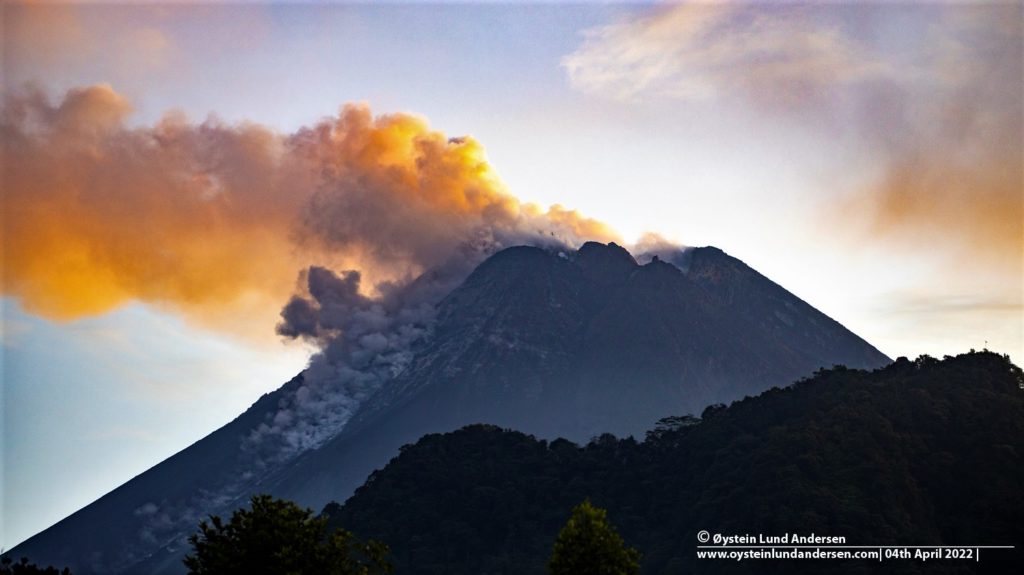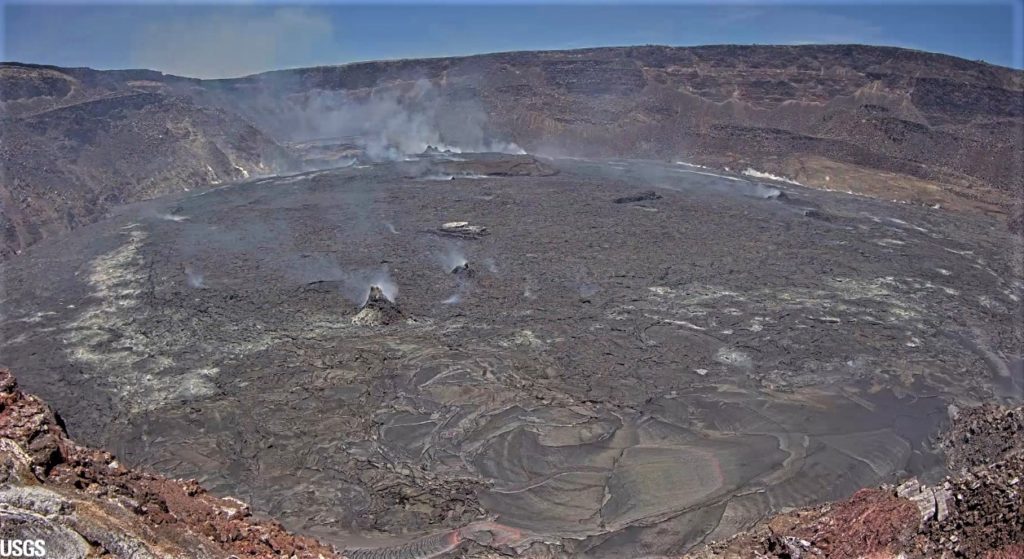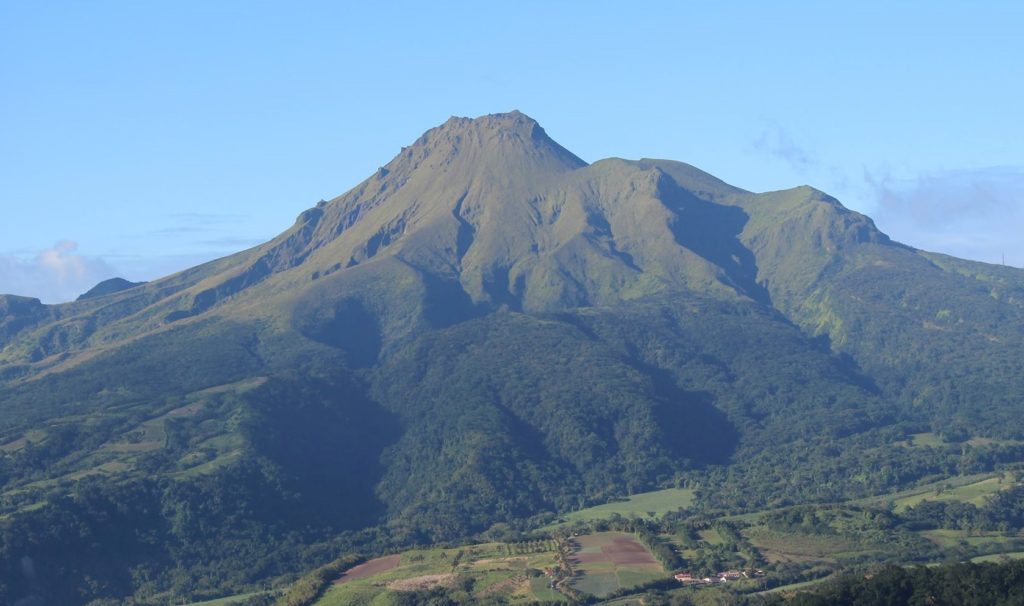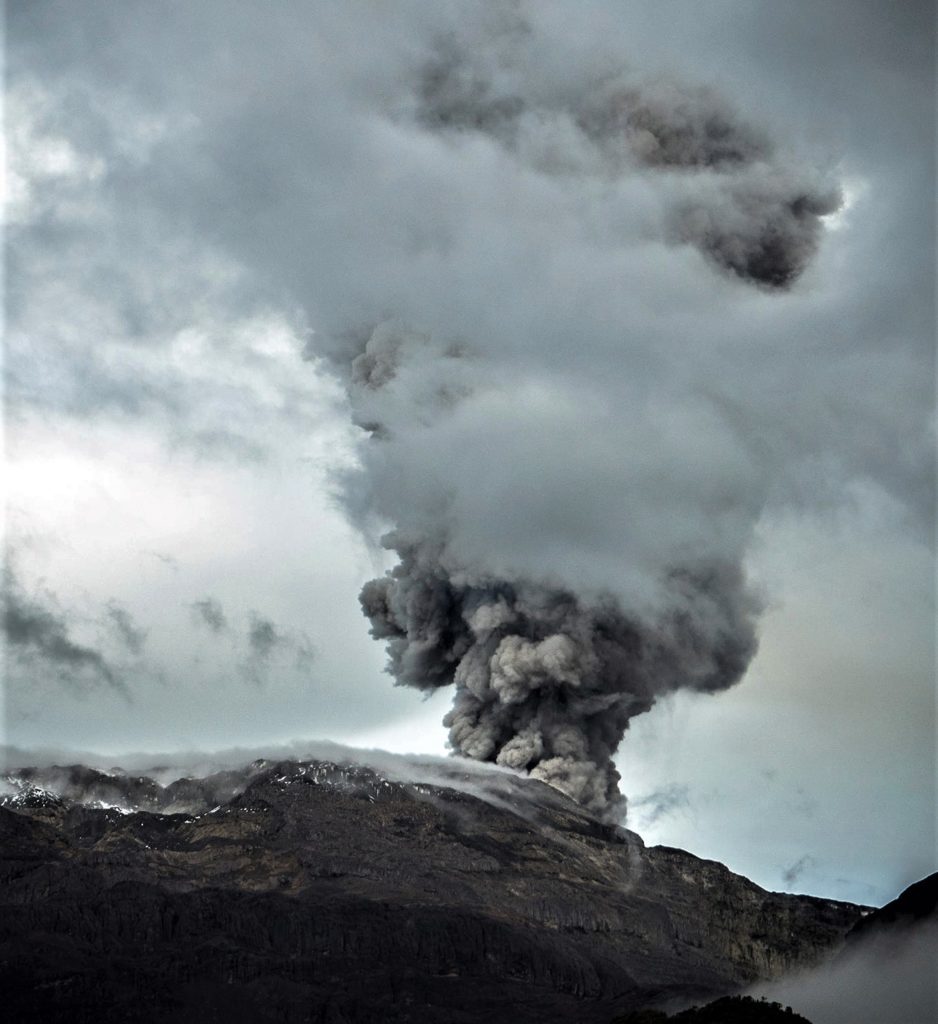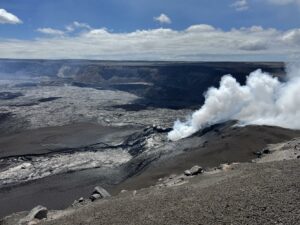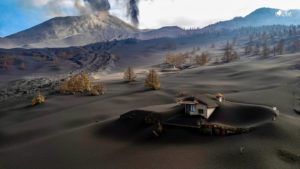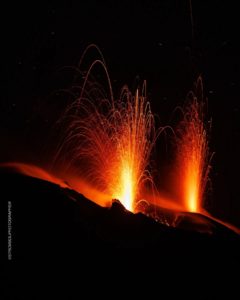June 04 , 2022.
Indonesia , Merapi :
Merapi activity report from May 27 to June 2, 2022.
– This week, there was 1 avalanche of hot clouds towards the South-West (upstream of the Bebeng river) with an estimated slip distance of 1,500 m. Lava avalanches were observed 101 times to the southwest, descending the Bebeng River with a maximum slip distance of 1,800 m.
– For the southwest dome, there is no change in the height of the dome. For the central dome, no significant morphological change was observed. According to photo analysis, the volume of the southwest lava dome is 1,551,000 m3 and that of the central dome is 2,582,000 m3.
Seismicity:
This week, the seismicity of Mount Merapi recorded:
1 Avalanche of hot clouds (APG).
1 deep volcanic earthquakes (VTA)
33 shallow volcanic earthquakes (VTB),
91 multi-phase earthquakes (MP),
669 avalanche earthquakes (RF),
5 emission earthquakes (DG),
14 tectonic earthquakes (TT).
The intensity of this week’s seismicity is still quite high.
Mount Merapi’s deformation, which was monitored using EDM this week, showed a distance shortening rate of 0.4 cm/day.
– Rainfall intensity was 53 mm/hour for 125 minutes at Kaliurang Post on May 31, 2022. There were no reports of lahars or additional flow in the rivers that originate at Mount Merapi.
Conclusion:
1. Merapi volcanic activity is still quite high in the form of effusive eruption activity. The state of the activity is set to the « STANDBY » level.
2. The current potential danger is lava avalanches and hot clouds in the South-South-West sector covering the Boyong River for a maximum of 5 km, the Bedog, Krasak, Bebeng rivers for a maximum of 7 km. The Southeast sector covers the Woro River for a maximum of 3 km and the Gendol River for a maximum of 5 km. Meanwhile, the ejection of volcanic material in the event of an explosive eruption can reach a radius of 3 km around the summit.
The public should not carry out any activity in potentially dangerous areas, anticipate disturbances due to volcanic ash from the Merapi eruption and be aware of the dangers of lahars, especially when it rains around Merapi.
Source : BPPTKG.
Photos : Oystein Lund Andersen .
Hawaii , Kilauea :
19°25’16 » N 155°17’13 » W,
Summit Elevation 4091 ft (1247 m)
Current Volcano Alert Level: WATCH
Current Aviation Color Code: ORANGE
Activity Summary:
The summit eruption of Kīlauea Volcano, within Halemaʻumaʻu crater, continued over the past 24 hours. All recent lava activity has been confined to the crater, and current data indicate that this scenario is likely to continue. No significant changes have been noted in the summit or East Rift Zone.
Halemaʻumaʻu crater Lava Lake Observations:
Eruption of lava from the Halemaʻumaʻu western vent into the active lava lake and ooze-outs onto the crater floor has continued over the past 24 hours. The active lava lake has shown continuous surface activity, although the active lake level has dropped 5 meters (16 feet) since yesterday afternoon. Lava ooze-out activity occurred along the eastern, northeastern, northwestern, western, and southern edge of the crater floor. Overflight measurements on May 10, 2022 indicated that the crater floor had seen a total rise of about 106 meters (348 feet) .
Summit Observations:
Summit tiltmeters recorded deflation over the past 24 hours. A sulfur dioxide (SO2) emission rate of approximately 3,900 tonnes per day (t/d) was measured on May 31, 2022.
Source et photo : HVO.
La Martinique , Mount Pelée :
Weekly report on the activity of Mount Pelée for the period from May 27, 2022 to June 03, 2022.
Between May 27, 2022 at 4 p.m. (UTC) and June 3, 2022 at 4 p.m. (UTC), the OVSM recorded at least 22 volcano-tectonic earthquakes of magnitude less than or equal to 0.6. These earthquakes were located inside the volcanic edifice between 0.5 and 1.2 km deep below the surface. This superficial volcano-tectonic seismicity is associated with the formation of micro-fractures in the volcanic edifice. During the writing of this report, the OVSM also recorded 2 hybrid type earthquakes, one of which was located in the volcanic edifice. This signal containing low frequencies is associated with the presence of fluids inside the volcanic edifice.
None of these earthquakes were felt by the population.
The zone of degassing at sea at shallow depth between St Pierre and le Prêcheur is still observed. The IGP took fluid samples in order to understand the origin of this degassing and to assess its possible relationship with the Mount Pelée hydrothermal system.
An extension of two areas of degraded vegetation located between Morne Plumé and the Rivière Chaude was observed during a helicopter flight carried out on February 9, with the support of the Dragon 972, and confirmed by analysis of satellite images.
The alert level remains YELLOW: vigilance.
Source : Direction de l’OVSM IPGP.
Photo : OVSM IPGP.
Colombia , Nevado del Ruiz :
Bulletin of activity level of the Nevado del Ruiz volcano.
The activity level continues at the yellow activity level or (III): changes in the behavior of volcanic activity.
Regarding the monitoring of the activity of the Nevado del Ruiz volcano, the COLOMBIAN GEOLOGICAL SERVICE reports that:
Seismicity related to fluid dynamics inside volcanic conduits showed an increase in both the number of earthquakes and the seismic energy released, compared to the previous week. This seismic activity was characterized by the appearance of continuous volcanic tremors, tremor pulses, long and very long period type earthquakes. In general, these signals exhibited moderate to low energy levels, variable spectral content, and were located primarily within Arenas Crater. Thanks to the cameras installed in the area of the volcano, the report of the officials of the National Natural Park of Los Nevados confirmed the gas and ash emissions associated with some of these signals. On May 25 and 26, there was confirmation of ash fall in the city of Manizales and other cities located west and northwest of the volcano.
Likewise, thanks to the FLIR thermographic cameras of the volcanic monitoring network, changes in the relative temperature of the emitted material have been observed.
The seismicity associated with the fracturing of the rocks also showed an increase in the number of earthquakes and the seismic energy released, compared to the previous week. This seismic activity was mainly located within a radius of 6 km around the crater, in the South-South-West, East-South-East and volcano sectors and in the Arenas crater. The depth of the earthquakes varied between 0.5 and 6.8 km. The maximum magnitude recorded during the week was 1.51 ML (Local Magnitude), corresponding to the earthquake that occurred on May 26 at 12:14 p.m. (local time), located 4.5 km south-south-west of the Arenas crater, at a depth of 4km
The deformation of the volcanic surface, measured from GNSS (Global Navigation Satellite System) stations and electronic inclinometers, continued to show a stable trend.
Source : SGC
Photo : Álex Palacio
Guatemala , Fuego :
LAHAR IN THE BARRANCA CENIZA, TRIBUTARY OF THE ACHIGUATE RIVER
The rains recorded on the Fuego volcano are currently generating the descent of a lahar in the Ceniza ravine, a tributary of the Achiguate river, on the southern flank of the volcano. This lahar is weak in nature, it moves along the eastern edge of the Ceniza channel, parallel to the road that leads to La Rochela. The lahar carries a pasty mixture of water, boulders up to 1 meter in diameter and finer sediments, as well as small tree trunks and branches. The lahar on its path produces vibrations in the ground, as can be seen on the seismogram of the FG14 station. If these rains persist, the possibility that more lahars descend in this ravine and in any other ravine of this volcano is not excluded.
INSIVUMEH maintains visual and instrumental monitoring of volcanic activity through seismic stations, volcano spotters and web cameras.
Activity:
The Fuego Volcano Observatory reports cloudiness in the area, however, 2 to 6 weak rumblings were heard per hour, associated with explosions. These explosions generate columns of ash from 4,500 to 4,800 meters a.s.l. (14,763 to 15,748 feet) which are dispersed in the northeast and east of the volcano due to the wind pattern. In addition, low noises were heard due to the avalanches generated around the crater and towards the ravines of Santa Teresa, Taniluyá, Ceniza, Las Lajas and Honda. There is a likelihood of ash fall in communities to the northeast and east of the volcano, as well as in the metropolitan area of Guatemala City.
Source : Insivumeh.
Kamchatka , Bezymianny :
The extrusive-effusive eruption of the volcano continues. Ongoing activity could affect low-flying aircraft.
The extrusive-effusive eruption of the volcano continues, a strong fumarole activity, and an incandescence of the lava dome, and hot avalanches accompanies this process. Satellite data by KVERT show the ash plumes were extending for 100 km to the northeast of the volcano on 26-27 May; a thermal anomaly over the volcano all week. The powerful explosive eruption occurred on 28 May, its paroxysmal phase began at 07:15 UTC. The explosions raised ash up to 12 km a.s.l., ash plumes and clouds moved over 3,500 km southeast of the volcano during the day.
Source : Kvert
Photo : S. Samoylenko. 4/5/2022 .

